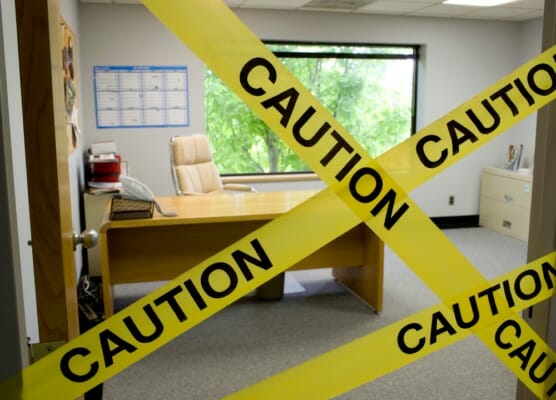CDC’s reopening guidelines mark rocky road back to work

On May 28, the Centers for Disease Control and Prevention quietly dropped a bombshell for employers trying to figure out how to safely reopen their office buildings as the coronavirus pandemic wanes. The CDC’s new guidance calls for major changes that will be difficult for many employers to make.
For example, the CDC advises employers to bar seating in common areas, spread desks at least six feet apart and restrict elevator capacity to allow six feet between occupants.
The guidance (read it at www.cdc.gov/coronavirus/2019-ncov/community/office-buildings.html) calls on employers to address the following before reopening:
Assess the building. The CDC says the first step is to determine if the building you locked up three months ago is physically able to open. Unoccupied buildings can quickly become hazardous. Mold may thrive. Unused plumbing may harbor legionella, the bacteria that causes Legionnaires’ disease. Rodents and other pests may have moved in.
Evaluate hazards. Employers must figure out where returning workers might contract covid-19 at work. Identify areas where workers will be within six feet of one another. Examples: meeting rooms, break rooms, cafeterias, locker rooms, waiting areas, entrances and exits.
Isolate workers from hazards. The CDC suggests installing transparent shields to separate employees and visitors. Reconfigure reception areas and communal seating spaces; remove seating and space out chairs. Get rid of high-touch, communal items like coffee pots, water coolers and snack bins.
Increase ventilation, running air-handling systems even when the building is unoccupied. The CDC recommends adding ultraviolet germicidal irradiation systems to help deactivate the virus.
Change behavior to reduce infection. Reiterating familiar advice, the CDC again urges employers to tell workers with covid-19 symptoms or sick family members to stay home. Any employee who becomes sick at work must be immediately isolated, provided with a mask and sent home to follow up with their doctor. Immediately shut down the employee’s work station so it can be cleaned and disinfected.
Conduct daily health checks, including temperature measurements, before workers enter the office.
Stagger start times if necessary to prevent crowding. Always require employees and visitors to wear face masks.
Regularly clean all surfaces. Make sure workers have hand sanitizer and cleaning wipes.
Require all employees to wash their hands as soon as they arrive at work. Provide enough breaks for regular handwashing throughout the day.
Educate employees and supervisors. Offer coronavirus safety training to all staff, including supervisors.
Cover the community spread dangers of using public transportation and carpools to get to and from work. Offer incentives—reimbursements or parking passes, for example—to encourage employees to travel alone in cars or use single-occupancy rides. Stagger shifts for those who must use public transportation so they can avoid rush hour peak times.
Bottom line: If these guidelines sound difficult to implement, consider whether you are ready yet to reopen. If your operations proved sustainable with employees working remotely, think about continuing the practice. Perhaps you can phase in returning to work by alternating telework arrangements with a gradual return to usual office routines.






